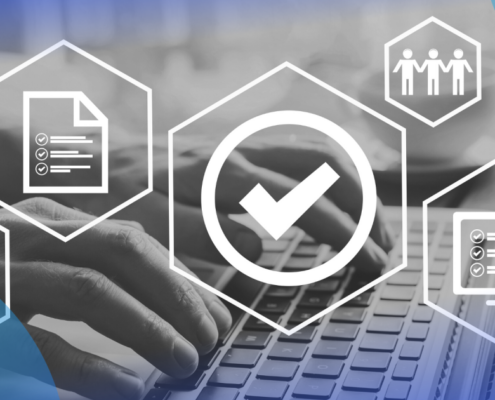
In the age of Big Data, enterprises have access to such large volumes of data that it can become overwhelming. Many organizations make the erroneous assumption that collecting data is enough and often do very little with it.
Thus, 95% of organizations needs to implement methods to manage unstructured data. Furthermore, 61% of companies that are aware of the benefits of data and analytics state that their organizations haven’t developed comprehensive analytics strategies for the long-term.
Going beyond data collection and analyzing it to gain useful insights involves employing the right analytical techniques. Below you will find six of the most useful.
Regression Analysis
Regression is employed when there is a need to predict the future. It is used to examine relationships between two or more variables and determines how independent variables affect a dependent variable.
A dependent variable is the issue you are trying to learn more about, whereas the independent variable is the factor you think could be affecting the dependent one.
Essentially, you would use regression analysis when you want to determine the factors that would affect your area of interest, such as customer satisfaction. The advantage is that it also helps you discover how important each factor is and which ones would generate the best return on investment.
Hypothesis Testing
Hypothesis testing allows you to test any assumptions you might have. It’s invaluable because you can use it to determine how a certain decision could impact your company. It is also useful because it helps you determine whether there really is a connection between two variables.
For example, you might be looking to increase your online sales and believe free shipping will help. Once you run the test, though, you discover that it has very little effect.
Monte Carlo Simulation
A Monte Carlo simulation relies on probability modeling to determine the level of risk. It’s used to determine how an unpredictable variable might affect a certain factor.
For example, let’s say that you want to increase your profit margin and you think the best way to do this is to expand your sales team by five people, for example.
Currently, you pay your sales team a fixed wage, plus commissions. So, you have an idea of the fixed costs. You also have historical data on how much each sales rep generates in earnings. This means you can work out approximately how much each sales agent would be worth to the company.
However, you have to consider the uncertainty involved. For example, what region is that sales agent selling in?
Instead of using just a few figures to determine the outcomes, with a Monte Carlo simulation, you can test hundreds or thousands of options.
This approach means that instead of just seeing averages, you can see a range of potential results. You will essentially be able to see the best- and worst-case scenarios and everything in-between.
Coming back to our example, if the worst-case scenario where all the new sales reps perform far below average means the profit margin remains the same, then it’s likely a good course of action.
So, you can use a Monte Carlo simulation to determine how uncertain factors will affect an outcome. Instead of just resorting to averages, you will get a far more complete picture with this form of analysis.
Linear Programming
With linear programming, you can determine the best result based on a set of specific variables. It can be used for things like discovering the most effective way to maximize sales while minimizing customer acquisition costs.
Linear programming involves taking complex relationships, simplifying them so they become linear, and then finding the optimum points.
For example, a pizza delivery person has seven pies to deliver. To save time, he will want to use the shortest possible route. So, he will look at all the possible routes and work out which one is shortest. This strategy is, basically, linear programming.
Linear programming can be used to develop optimal solutions for a wide range of issues. You can determine, for example, how much of each product you should stock to maximize profitability during the holidays. Or you can work out what the optimal price point is to maximize your profit margin while also growing sales.
This is an extremely valuable form of analysis and can be used to streamline operations and significantly improve your bottom line.
Collecting data isn’t enough. If you want your enterprise to derive the benefits of big data, you need to conduct an effective analysis.
Data Mining
Data mining is invaluable to enterprises with large amounts of data because it can help make sense of large data sets faster. This type of analysis is used to identify patterns and anomalies, but also to find correlations between factors.
For example, using data mining, you would be able to find things like when people purchase larger quantities, and when they purchase certain items. You could also discover whether there is a relationship between the timing and the purchases, such as the holidays, or whether other factors are at play, like pricing.
Content Analysis
In today’s world where everyone posts everything online, content analysis is essential to understanding your target market. It employs a variety of techniques, such as color-coding similar ideas, and is used to identify the most commonly recurring threads in text-based data.
This type of analysis is best suited to qualitative data, such as open-ended surveys, customer feedback, and interview data, but also data collected from third-party sources, such as social media.
Collecting data isn’t enough. If you want your enterprise to derive the benefits of big data, you need to conduct an effective analysis. It is the only way to garner the necessary insights to make data-driven decisions that will positively impact your bottom line.





















